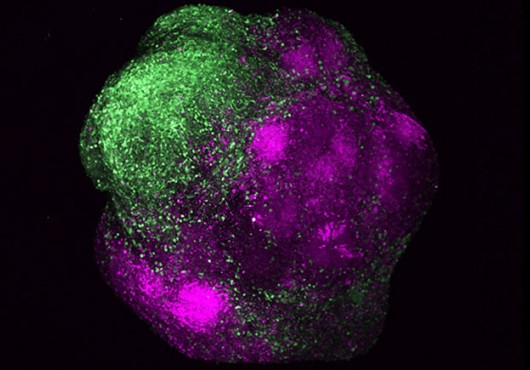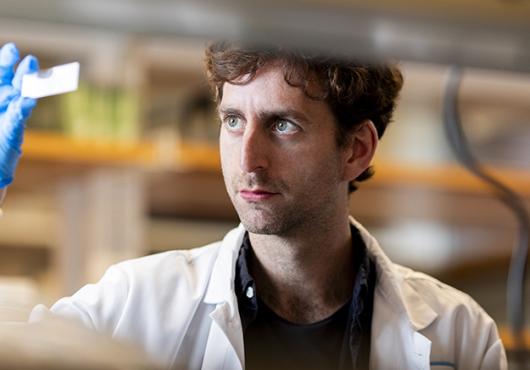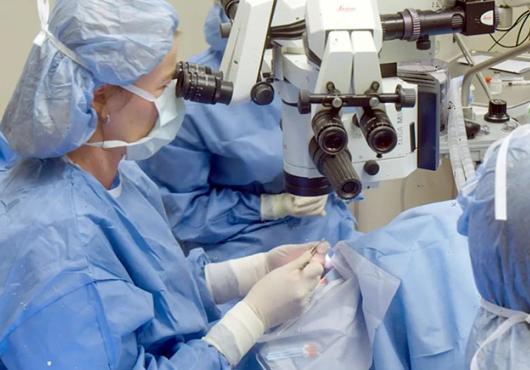
To stay healthy, our lungs have to maintain two key populations of cells: the alveolar epithelial cells, which make up the little sacs where gas exchange takes place, and bronchiolar epithelial cells, also known as airway cells, which are lined with smooth muscle.
Stem cell scientist Carla Kim, Harvard Medical School associate professor of genetics at Boston Children’s Hospital, asked: How does a stem cell know whether it wants to make an airway cell or an alveolar cell?
Figuring this out could help in developing new treatments for such lung disorders as asthma and emphysema, manipulating the natural system for treatment purposes.
It’s been widely assumed that epithelial stem cells direct the formation of these two cell types, but the picture turns out to be more complicated.
To investigate lung cell formation, Kim and her former postdoctoral researcher Joo-Hyeon Lee, who is now at the Cambridge Stem Cell Institute and the Wellcome Trust in the U.K., observed what kinds of cells were being made, using a 3-D organoid culture system they established in 2014.
They added single-cell RNA sequencing to see which genes each cell type turns on. This enabled Kim and colleagues to identify what the cells are saying to each other.
As reported Sept. 7 in Cell, they found that lung cells known as mesenchymal cells—not to be confused with mesenchymal stem cells—are the cells driving the action. Through the single-cell RNA sequencing, they further found that mesenchymal cells come in at least five flavors with different molecular signatures.
“All of these cell types are interacting with each other to repair and regenerate lung tissue,” said Kim. “What we learned is that mesenchymal cells are telling the epithelial stem cells what type of lung cell they should make.”
Cells with a marker called LGR5 secrete a lot of a molecule called Wnt5A that promotes the formation of alveolar cells, Kim’s team showed, while cells with the LGR6 marker are important for repair of airway cells.
“If you have a disease like emphysema or bronchopulmonary dysplasia where alveolar cells are not being repaired, stimulating the WNT pathway could be important,” said Kim. “When WNT is blocked, you get the alternate kind of cell. But if you add WNT back in, it goes back to usual.”
For airway problems like asthma, blocking WNT or finding a way to boost the formation of LGR6-bearing cells could be approaches to exploring ways to increase production of airway cells.
“We found that if you injure mouse lungs so airway cells are killed off, you need LGR6+ cells to repair that kind of damage,” Kim said.
But she acknowledges that there’s much more to be learned.
“What we really want to know next is, what are all the secreted factors these cells make that can control cell fate?” she said. “Those could be potential therapeutic targets.”
Lee was the study’s first author.
The work was supported by the Wellcome Trust and Royal Society (107633/Z/15/Z), European Research Council (679411), Cambridge Stem Cell Institute (07922/Z/11/Z), American Lung Association (400553), National Institutes of Health (R01HL090136, R01HL132266, R01HL125821, U01HL100402, U24CA180922, P30CA14051), Harvard Stem Cell Institute, Howard Hughes Medical Institute and the Klarman Cell Observatory at the Broad Institute of Harvard and MIT.
Adapted from a post on Vector, the Boston Children’s science and clinical innovation blog.





